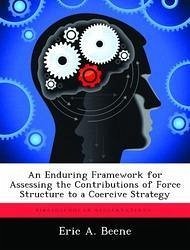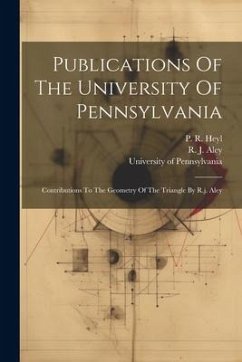Nicht lieferbar

An Enduring Framework for Assessing the Contributions of Force Structure to a Coercive Strategy
Versandkostenfrei!
Nicht lieferbar
The US Department of Defense is still struggling to define itself in the post Cold War age, over a decade after the new period has begun. With a strategy and force structure review occurring on average every two years, the military has still not been able to generate a consistent basis on which to justify its force structure or its strategy. This paper uses a decision analysis framework as a foundation for creating such a basis. Instead of depending on leadership for guidance, which changes with destabilizing regularity, this paper relies on the theories of coercion that began in the Cold War ...
The US Department of Defense is still struggling to define itself in the post Cold War age, over a decade after the new period has begun. With a strategy and force structure review occurring on average every two years, the military has still not been able to generate a consistent basis on which to justify its force structure or its strategy. This paper uses a decision analysis framework as a foundation for creating such a basis. Instead of depending on leadership for guidance, which changes with destabilizing regularity, this paper relies on the theories of coercion that began in the Cold War era. These theories have particular value today, especially in light of the many innovations the nation has undertaken in the past decade. Modified and translated for modern conventional warfare, these theories form the basis for a framework of enduring requirements for any military force that undertakes a coercive strategy. This paper develops this framework to the operational level of analysis, and it is applied to two developmental air platforms, the Global Hawk Endurance Unmanned Aerial Vehicle and the Unmanned Combat Air Vehicle. The unique contributions of these two platforms become apparent using this framework, and the value of the framework is depicted as it points to areas for future improvement in these systems. Finally, the paper makes a comparison between this framework and traditional analyses and strategy review processes, and it shows the unique and enduring value of this analytical framework for assessing the contributions of air power platforms. This work has been selected by scholars as being culturally important, and is part of the knowledge base of civilization as we know it. This work was reproduced from the original artifact, and remains as true to the original work as possible. Therefore, you will see the original copyright references, library stamps (as most of these works have been housed in our most important libraries around the world), and other notations in the work. This work is in the public domain in the United States of America, and possibly other nations. Within the United States, you may freely copy and distribute this work, as no entity (individual or corporate) has a copyright on the body of the work. As a reproduction of a historical artifact, this work may contain missing or blurred pages, poor pictures, errant marks, etc. Scholars believe, and we concur, that this work is important enough to be preserved, reproduced, and made generally available to the public. We appreciate your support of the preservation process, and thank you for being an important part of keeping this knowledge alive and relevant.







